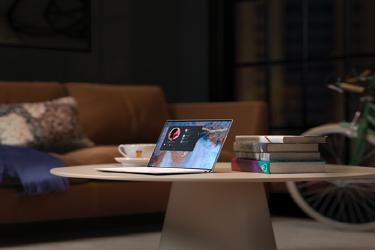
Of all the immutable forces around us, time is probably the easiest and most powerful one; trying to harness gravity would be a lot harder than harnessing your time. There are many reasons for this: it’s the same for everybody, it’s unchanging, and we’re able to harness it for our purposes. A great way to start to use the time for your advantage is by doing some reviews and reflection on past events, like a yearly review. A full year went by once again; what did it teach us? How did it make us grow? What changed around us?
This year was especially tough on all of us in nearly every possible way, from pandemic, lockdown, anxiety to remote work with a new culture. The decade’s start was anything if not life-changing for many of us. For those reasons, this year, it’s even more important to take a step back and think about what we learned. The new experience, the new challenges as we advance, and the small and big discovery digest all those things to move forward to a new year, hopefully less eventful. So what exactly did I learn last year?
The fragility and importance of habits
Habits are among those things most people know about to an extent but usually just in a vague fashion. Even though you might not entirely understand them, they’re still there working for or against you. That’s one of the things that make them so prevalent and so important, even more than people realize at first glance. That situation creates an imbalance where habits are hard to get going and easy to lose if left alone for too long or if you didn’t realize they were there in the first place.
The fragility of habits and routine became a lot more apparent to many of us in 2020 when most of our previous routine shattered from the switch to remote work, lockdowns, and other restrictions. My morning shifted from waking up, walking to work for 20m then starting my workday to waking up, doing our daily remote call then working from my house. Just from that change came a significant shift in habits and cues, and with that suddenly, some habits that were a staple became hard to maintain or fell off from the sudden friction. When you reach that point, if you don’t realize what’s happening, most of those fallen off habits might be replaced by “bad” habits that are easier and create less friction.
That said, this can go the other way too. If you become aware of your current habits and do some work in the new environment to either bring back old cues or build new ones, you can return to your previous state or better. As I said above, building “good” habits to replace “bad” one requires a lot of effort and attention. That’s why this year, I want to take the time to focus on rebuilding my habits, new and old, to be better for my current situation. Treating them like the project they are instead of just a background task will make it a lot more sustainable to do that change. The other significant difference this time around will be to put my money where my focus (mouth) is and pay for a good course that will help me with some of the things you can’t get from just reading about habits or doing it on your own.
The importance of seeing longer-term
About halfway in the year, I started to feel like my system was getting a bit too sluggish and slowing me down. That primarily manifested itself by me not creating reminders or tasks and starting to rely on my memory and brain again, which, as you probably know, is terrible. After some reflection and research, and decided to migrate back to Todoist from Clickup. It was not because the tools would save my system, but because it was a lot leaner (to offset the sluggishness) and worked better on mobile (which was still a concern of mine at the time).
While this could have been enough to help the problems I was experiencing, I also decided to go a step further in the heaviness department and slim my whole system even more. The new approach is based on The Time Sector by Carl Puelin and is very time centric instead of task-centric in its function. There’s no project management, and tasks go into buckets where they will be actionable next: today, next day, this week, next week, this month, next month, this quarter, someday. Projects themselves are handled in another app like your note apps or excel or somewhere where you go often but not in the todo app.
This method worked well; I liked being able to quickly send a task in the future for myself. That made weekly planning a lot easier, but it also created some issues over time. It’s way too easy to “go with the flow” and grind away at tasks and lose the big picture’s context. It became more challenging for me to plan longer picture projects like full month one and see progress on my quarterly/yearly goals. That kind of long-term view was one of the big reasons why I went to Clickup in the first place, to be able to have a chain that goes from the year down to today’s project. Seeing long term allows me to see the progress and give me momentum. It’s also a reminder of why I’m doing this or that project, why it’s essential. Being able to bridge from a daily task up to a yearly goal is a compelling thing for me, and it makes it a lot easier to keep going forward in the path I want to walk.
The importance of review when things changes
The importance of review goes hand in hand with the previous one, mainly since seeing longer-term and reviewing changes is how you can keep on the path. Checking what you’re working on when change happens seems obvious, but the review also needs to go deeper and broader. Change can happen on multiple levels, sometimes all at once, not just in your projects and tasks. It could be a change in your system, process, life, work position, health, etc. When massive changes happened at the start of the year, I found myself trying to keep going like before.
While it was okay to keep going at first, what I should have done is take some time to stop and review what and how things changed. Last year I went from working in an office with co-workers every day to working remotely from my apartment instead. That’s just one thing that changed too; there were many others, often happening at lightning speed compared to the usual pace of changes. The thing with fast change is that the quicker it changes, the more often you should review to make sure things still make sense. In a year like 2020, it didn’t make sense for me to rely on last year’s plan/review with some quarterly check-in when in a quarter, my whole life got flipped upside down.
My goals, systems, work, and life all changed, and with them, the process and requirements changed. In a situation like that, adapting is a lot better than keep going, but it’s nearly impossible to adjust without reviewing the current situation. For example, many of my yearly goals didn’t make sense anymore, now was not the time to meet with more peoples and explore my neighborhood, to name a few things. In turn, that created a weird situation where I ended up with no goals for a big chunk of the year and not much motivation for the other goals since my priorities and goals shifted. To prevent that situation from happening again, I’ll give myself more time to review changes regularly and do a more significant mid-year review for bigger course adjustments as needed.
Remote work relies a lot more on yourself
That lesson is one that many others learn the hard way this year. The global shift to remote work across nearly all industries pushed many people to be on their own suddenly and work from their homes. Remote work means you have to rely a lot more on yourself for just about every aspect of work, instead of relying on cues from your environment or co-workers. Our work environment cues trigger a surprising number of the routines we have; it’s very noticeable when they stop working.
Things like lunch breaks, afternoon coffee, start and end of the day, are often relying on cues, for example: are your co-workers standing up to go to lunch, is one of them making a coffee, did everyone leave already? Those cues are naturally creating boundaries for you to work into. Another easy example is commuting to and from work; it helps your brain start and stop thinking about work, etc. When you’re working from home, those boundaries and cues get removed, so you need to recreate them yourself.
Other aspects of work also change, like communication; for example, it relies a lot more on you and your initiative, from small talk to critical discussion. You can’t just bump into people and then inform them of some progress or need for help. More often than not, things will need to be more structured with context and in more details when communicating remotely, since it will most likely be an asynchronous exchange.
I want to go about handling this change simply by treating remote working like a completely new job, as much as possible. How would I set up my boundaries, communications, tasks, and projects if a fully remote company hired me from the start? Learning things like what is the best routine for work, when are people most likely to be available, how can I best try to communicate via text. While I cannot force a change in how other people do things, I could lead by example and change things I have control over to make them better for myself, just like when you start a new job.


